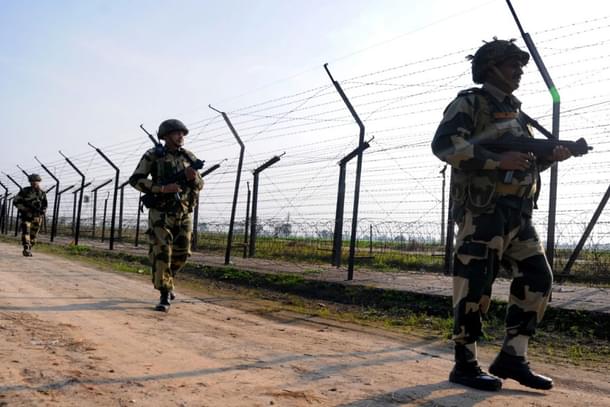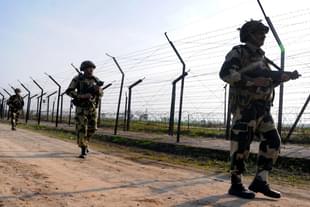Defence
Ceasefire: A Tactical Indian Victory, An Emotional Incompletion
Ravishankar
May 11, 2025, 12:10 PM | Updated May 13, 2025, 11:27 AM IST
Save & read from anywhere!
Bookmark stories for easy access on any device or the Swarajya app.


The ceasefire between India and Pakistan, announced on May 10, 2025, is not a resolution; it is an intermission—a pause in hostilities that brought South Asia dangerously close to a nuclear tipping point.
On paper, this was an Indian victory: in execution, in dominance, in discipline. But in sentiment, it feels incomplete.
India’s Undeniable Military Superiority
The facts are beyond dispute: India decisively controlled the battlefield. It inflicted significant casualties on Pakistani military and terror infrastructure, neutralised over 300 incoming drones and missiles with its formidable S-400 air defence system, and struck targets perilously close to Rawalpindi, the epicentre of Pakistan’s nuclear command.
The Indian response to the heinous April 22 terror attack in Kashmir, which claimed the lives of 26 Hindu pilgrims, was swift and surgical. What began as precise strikes on Lashkar-e-Taiba camps soon expanded to include Pakistani Army installations.
Nur Khan Air Base, adjacent to the Strategic Plans Division, was rocked by explosions—signalling how close India came to decapitating Pakistan’s nuclear backbone.
Pakistan's retaliation, in contrast, was feeble and ineffective. Hundreds of drones and missiles entered Indian airspace. Not one succeeded. Not one inflicted damage. India's S-400s performed with ruthless precision, revealing the gaping chasm between the two nations’ defence capabilities.
Pakistan's “Victory”: A Celebration of Survival
And yet, it is Pakistan that is celebrating.
Their definition of “victory” lies not in strength, but in survival. The very fact that Rawalpindi was not flattened, that the nuclear command was not decimated, and that the state remained territorially intact is, for them, a reason to rejoice.
In a country where citizens queue for subsidised wheat flour, not being wiped out is seen as a diplomatic triumph.
This stark asymmetry—between what India could have done and chose not to do, and what Pakistan feared would happen and didn’t—explains the divergent narratives post-ceasefire.
Why India’s Ceasefire With Pakistan Feels Incomplete
Here lies the Indian dilemma. The Indian public, scarred by decades of cross-border terror, wanted more than retribution. They wanted closure. Two long-standing objectives stood tall in public imagination:
The annexation of Pakistan-occupied Jammu & Kashmir (PoJK)
The strategic fragmentation of Pakistan into smaller, less dangerous geopolitical units: Sindh, Balochistan, and Punjab
These goals are not just emotional—they are driven by national security logic. PoJK remains a festering wound of the unfinished partition. And a unified Pakistan, exporting jihad under nuclear cover, will always remain a threat.
India came close—close enough to make the world pause. The strike near Nur Khan Air Base was not an accident; it was a message. India had the capability to take out Pakistan’s nuclear command. It chose not to.
Western observers, including U.S. NSA Marco Rubio and Vice President JD Vance, recognised this restraint for what it was: a deliberate, mature signal of strength.
But this very restraint, born of responsibility, is what Pakistan now weaponises as victory.
The Paradox of Asymmetric Warfare
This is the paradox of modern asymmetric conflict: the weaker party wins by simply not being destroyed. And in that survival, they claim parity. But let us be clear—Pakistan did not win. It endured. It survived only because India, with far more to lose economically and diplomatically, chose to stop.
Pakistan remains a rogue actor, unshackled by global opinion, perpetually teetering on the edge of implosion. For such a state, even nuclear brinkmanship is fair play. For India, an emerging power with aspirations of global leadership, total war comes with global consequences.
That is why the guns fell silent. Not because the enemy fought valiantly, but because the victor walked away.
America’s Role and the Limits of Escalation
Though India officially downplayed foreign mediation, it is clear that the United States played a subtle but critical role behind the scenes. Alarmed by Indian strikes near Pakistan’s nuclear facilities, Washington moved quickly. Calls were made. Pressure was applied. Delhi stood firm but pragmatic.
Pakistan’s Prime Minister publicly thanked President Trump. India remained silent. It had nothing to thank anyone for—because it had not sought help.
And even as the ceasefire holds, skirmishes continue along the LoC. Pakistan claims to have downed five Indian aircraft, a claim yet to be independently verified. But its silence on the failure of its drone campaign speaks louder than any boast.
The Victory That Feels Unfinished
By every operational metric, this was an Indian triumph. Technological superiority, strategic precision, and international restraint—India showcased it all. But it didn’t feel like a victory. Because the deeper, historical objectives—the reunification of PoJK and the dismantling of the Pakistani terror state—remain unfulfilled.
Instead of conquest, there was caution. Instead of justice, there was strategy.
This is the burden of a rising power: India has to think like a responsible state, while dealing with an irresponsible neighbour.
Pakistan survives today not because it repelled India, but because India let it.
This ceasefire is not peace. It is a pause. A pause marked by Indian dominance and Pakistani delusion. But in every Indian home, there remains an ache—of something left incomplete.
Until PoJK is brought home, and the terror factories across the border dismantled for good, no ceasefire will feel final.
Ravishankar is a political analyst and commentator. He tweets at oru_pavam_nair.




